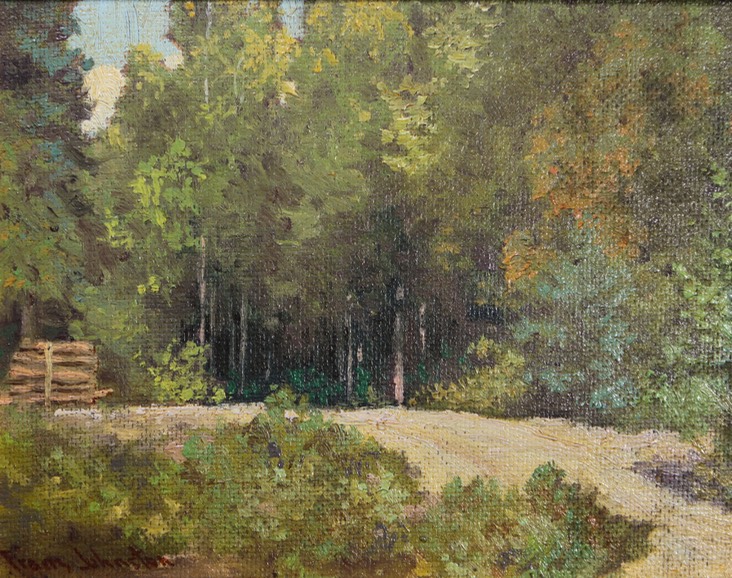
Frank (Franz) Johnston was born on June 19, 1888 in Toronto. Like many other Group members, he joined Grip Engraving Co. as a commercial artist. He studied in Germany from 1904 to 1907. Although his official association with the Group of Seven was brief, his friendship with the artists dated back over a much longer period. In 1910, he left for the United States where he studied art in Philadelphia and worked in commercial design in New York. Although an original member of the Group, Johnston's association was brief. He did take part in the Group's first exhibition of 1920, but by 1921 he had left Toronto to become Principal at the Winnipeg School of Art. In the earlier years of their friendship, Johnston had joined MacDonald and Harris on their journeys to Algoma. His paintings from those years express a strong decorative interpretation of the landscape. In later years, the artist's style became more realistic and revealed a strong fascination with the qualities of light. His landscape paintings became very full of images reflected on water. In 1927, Johnston changed his name to the more exotic title of `Franz' Johnston.
Johnston had much in common with his fellow Group of Seven artists. Like them, in the years before World War 1 he used his spare time to pursue landscape painting, through sketching trips around Toronto and farther north to Bon Echo near Algonquin Park and to Hearst north of Lake Superior —a source of inspiration for him. An eager participant in Group activities, Johnston went on all the Algoma trips except the last. Johnston did not use the techniques of Harris and MacDonald but, employing tempera rather than oil paint, he searched out the pattern and texture of his subject.
Johnston exhibited as a The Group of Seven member in their first show at the Art Gallery of Toronto (now the Art Gallery of Ontario) in May 1920. In the fall of 1921, Johnston left Toronto to accept the position as principal of the Winnipeg School of Art. There he held the largest show ever seen in that city. He had been slowly moving away from the Group movement, and now the break was complete. In 1924, he announced his official resignation, claiming that he had no disagreement with the group, only that he wanted to go his own way with regards to exhibitions.
Johnston's style became increasingly realistic throughout his life, evincing a particular fascination for the qualities of light reflected from snow. This theme recurred in later works, in large narrative paintings of the 1930s and 1940s as well as more intimate examinations of a river valley, the bright blue of the water bending between snow-laden banks or in quiet scenes of country roads such as this painting. His subjects range from the pastoral countryside of the Wyebridge area, northern Quebec, and the Northwest Territories.
He had begun in the 1920s to hold regular solo exhibitions and his paintings found a great following among the public. Unlike many Canadian artists, Johnston was able to achieve considerable financial success in his own lifetime.
He taught at the Ontario College of Art during the 1920s. In 1927, he changed his name to Franz Johnston.
He was made a member of the Royal Canadian Academy of Arts.
He died in Toronto in 1949 and buried with his fellow artists at the McMichael Canadian Art Collection in Kleinburg, Ontario.